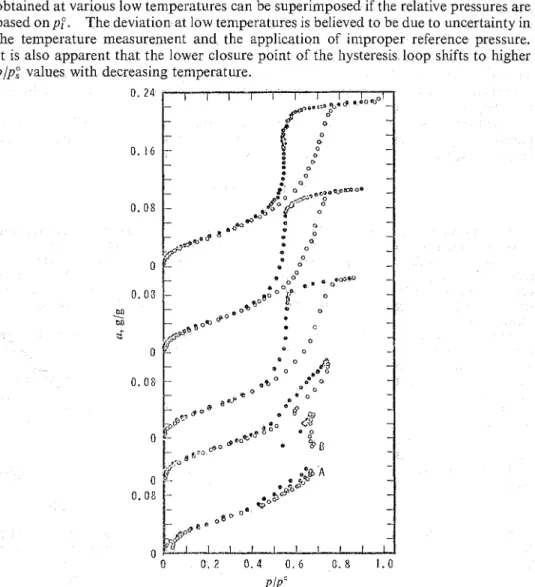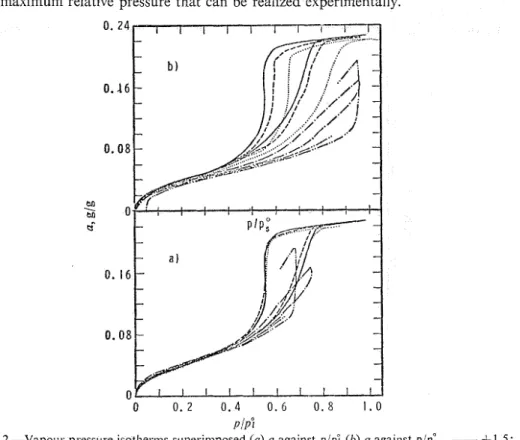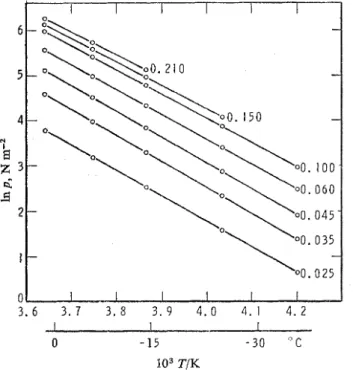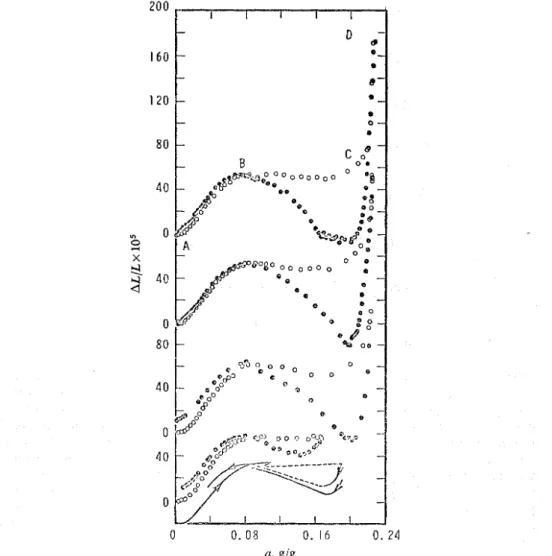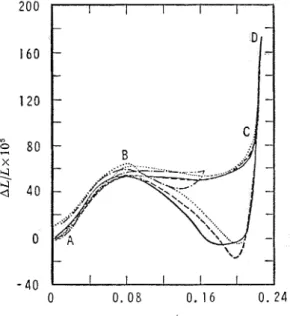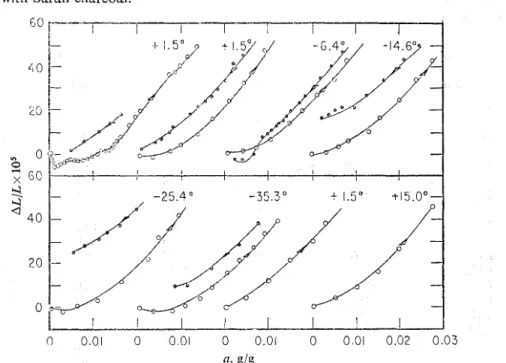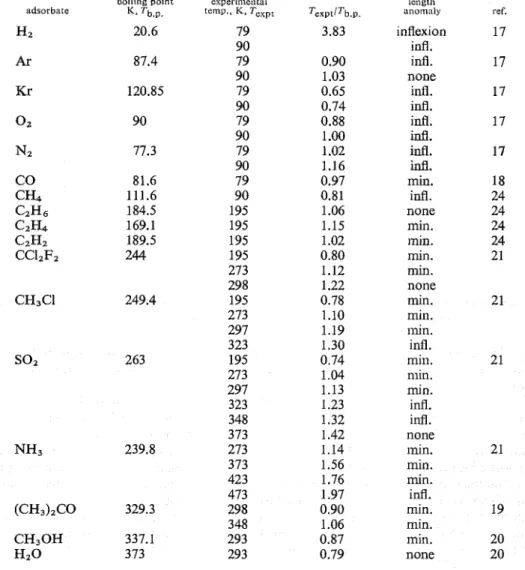Publisher’s version / Version de l'éditeur:
Transactions of the Faraday Society, 67, 585 Pt. 9, pp. 2726-2736, 1971-10-01
READ THESE TERMS AND CONDITIONS CAREFULLY BEFORE USING THIS WEBSITE. https://nrc-publications.canada.ca/eng/copyright
Vous avez des questions? Nous pouvons vous aider. Pour communiquer directement avec un auteur, consultez la
première page de la revue dans laquelle son article a été publié afin de trouver ses coordonnées. Si vous n’arrivez pas à les repérer, communiquez avec nous à PublicationsArchive-ArchivesPublications@nrc-cnrc.gc.ca.
Questions? Contact the NRC Publications Archive team at
PublicationsArchive-ArchivesPublications@nrc-cnrc.gc.ca. If you wish to email the authors directly, please see the first page of the publication for their contact information.
NRC Publications Archive
Archives des publications du CNRC
This publication could be one of several versions: author’s original, accepted manuscript or the publisher’s version. / La version de cette publication peut être l’une des suivantes : la version prépublication de l’auteur, la version acceptée du manuscrit ou la version de l’éditeur.
Access and use of this website and the material on it are subject to the Terms and Conditions set forth at
Phase transitions of adsorbates. Part 2. - Vapour pressure and
extension isotherms of the porous-glass + water system below 0° C
Sidebottom, E. W.; Litvan, G. G.
https://publications-cnrc.canada.ca/fra/droits
L’accès à ce site Web et l’utilisation de son contenu sont assujettis aux conditions présentées dans le site LISEZ CES CONDITIONS ATTENTIVEMENT AVANT D’UTILISER CE SITE WEB.
NRC Publications Record / Notice d'Archives des publications de CNRC:
https://nrc-publications.canada.ca/eng/view/object/?id=b40904b7-0314-41f5-be71-92cd7fc66782 https://publications-cnrc.canada.ca/fra/voir/objet/?id=b40904b7-0314-41f5-be71-92cd7fc66782Offprinted from the Transactions o f The Fnraclay Society
No. 5 8 5 , Vol. 67, Part 9, September, 1971
-&H..!A?.Y
ZED
PHASE TRANSITIONS O F ADSORBATES
PART 2.--VAPOUR PRESSURE AND EXTENSION ISOTHERMS O F THE POROUS-GLASS +WATER SYSTEM BELOW 0°C
Phase Transitions of Adsorbates
Part 2.-Vapour Pressure and Extension Isotherms of the Porous-Glass+ Water System Below 0°C
Building Materials Section, Division of Building Research, National Research Council of Canada, Ottawa 7, Canada
Received 19th October, 1970
The vapour pressure and extension isothernis of the water-poro~~s 96 "/, silica glass were deter- mined at -t1.5, -6.4, -14.6, -25.4 and -35.3"C. Isotherms obtained at these te~i~peratures coincided if the amount of adsorbed water, n, was plotted against the relative pressure with reference to that of undercooled water. This den~onstrates that the isothermally adsorbcd water is in a liquid- like state and confirms that the drastic reduction of rc with declining temperature is due to a decrease
of the maximum relative pressure that can be realized experimentally. I n contrast to previous s t ~ ~ d - ies, a minimum in the extension isotherm at low concentration was found, indicating that adjacent hydrogen-bonded silanol groups of the glass may not be the site of water adsorption as has been assumed in the past.
Examination of the pertinent literatwe suggests that a minimum of the extension isotherm is obtained on the adsorption of most su~bstances if the experinicntal temperature is not higher than the bulk boiling point. The contraction effect and the secondary hysteresis at low coverages are assumed to be caused by microporosity.
Phase transitions of water adsorbed in porous materials are of great technical and econonlic importance. In the continuing project alnling to clarify the mechanism of frost action in porous materials the heat of f ~ ~ s i o n of adsorbed ice was determined.' It became evident that thorough knowledge of the adsorption characteristics of the systems below the triple point of the adsorbate would greatly facilitate further progress and the present work was undertaken.
Several studies have been made in this The ~uost important finding reported is that for a relative pressure, p/pO, the amount of the adsorbate, a, decreases with decreasing temperature if p/pO is based on the vapour pressure of the crystalline solid, p i .
Amberg et aL2 and Kiselev and Kulichenko suggested that the decrease in the adsorptive capacity is only apparent. They argued that because the adsorbate is known to be in a liquid-like state the adsorption is governed by the magnitude of p relative to p; (the pressure of the undercooled liquid), and not p,". Since the upper limit of the experimentally realizable pressure is p,", pi' can never be achieved except at the bulk freezing point. As p; exceeds p.: by an increasing margin as the tempera- ture is lowered, the isotherms are terminated at values of p/p; which become progres- sively lower and which are always less than unity. If a is exprcssed in terins of p/p,: the limiting pressure value equals unity and complete saturation is implied. This results in distortion of the constructed isotherm and an apparent reduction of a for a givenplp,". Accordingly, when a is plotted against p/pP the isotherms ~uperimpose.~
* NRC Postdoctorate Fellow (1967-1969) ; present address Canadian Industries Limitcd, Central Research Laboratories, McMasterville, Quebec, Canada.
E . W . S I D E B O T T O M A N D G . G . L I T V A N 2727 I n those cases in whichplp," = 1 could not be achieved the desorption branch followed the " scanning " path.
Certain points, however, remained in need of clarification. First, according t o this explanation, the lower closure point of the hysteresis loop should shift t o higher rela- tive pressures with decreasing tenlperature if a is expressed as a functioli of pip," because of the distortion of the isotheri~~." N o indication of this could be found in the literature. Secondly, n o explanation was offered for a startling, and from the frost mechanism point of view important, observatio~l 4 3 that porous bodies appear
t o have a higher adsorptive capacity below tlie triple point, if a n isosteric rather than an isotlierlnal path is followed. Thirdly, n o prediction could be made regarding the behaviour of water as adsorbate because of its tendency t o be irregular, necessitating the study of the actual system.
For these reasons the present investigation of the previously studied
'.
'O water-porous 96
%
silica glass system has been undertaken. Both the vapour pressure a n d extension isotherms were determined a t temperatures below 0°C.E X P E R I M E N T A L
A P P A R A T U S
The apparatus, free of grease and mercury vapour, was constructed of stainless steel and glass, and could be pumped down to N mp2 pressure. The weight of the adsorbate ( 5 1 x g) was determined gravimetrically with the aid of a quartz helical spring (sensi- tivity : 30.68 cmlg) and the length changes of a conlpanion sample with a Tuckerman-type optical extensometer l ' (2.0 x 10-i crnlcm). An insulating evacuable jacket surrounded the
stainless steel sample cell. The assembly was imnlersed in an alcohol bath contained in a Dewar vessel.
The temperature of the cell was coiltrolled to k0.03"C with the aid of a saturable reactor- type instrument which governed the heater wound around the cell. By varying the output of two auxiliary heaters the ten~perat~lre gradient did not exceed O.O2"C/cm. The alcohol bath was cooled by the regulated llow of liquid iiitrogen through an immersed coil and stirred by bubbling air.
The pressure of the water vapour was measured with an Atlas diapluagm gauge in the range between lo-' and 10 N IT-' and by a Texas instrument quartz Bourdon gauge above
this value. An auxiliary pumping system provided the lo-' N m-' reference pressure. An ionization gauge was used to measure very low pressures.
The temperature of the cell was measured with the aid of six copper-constantan thermo- couples and a Leeds and Nortluup model K-3 potentiometer.
M A T E R I A L S
The porous 96 per cent silica glass l 2 (Corning 7930) adsorbent was in the form of a
1-mm-thick plate. Burning off the adsorbed impurities at 400°C in air required 14 days. The dry weight of the gravinietric sample was 0.9144 g and the nitrogen BET area 221 inz/g.
The water was purified by vacuum distillation and repeated freezing and thawing.
P R O C E D U R E S
After placing the samples in the cell the apparatus was baked at 200°C for 24 hours. In order to restore the original concentration of the hydroxyl groups on the glass surface, which was reduced during baking, saturation water vapour pressure was maintained in the cell for 48 h. This procedure proved to be inadequate as manifested by the large secondary hysteresis loop exhibited by the f i s t isotherm that was obtained. The separation between the two branches was eq~livalent to 0.016 g water per g glass at zero relative pressure. AI- though on tlie repeated and subsequent runs irreversibility was still apparent (to be discussed later), no weight gain was detected at 1 0 - W pressures. In order to avoid dehydroxy- lation this pressure was achieved between runs by pumping o~ily at room temperature.
R E S U L T S A N D D I S C U S S I O N V A P O U R P R E S S U R E I S O T H E R M S
Fig. 1 and 2 show plots o f a againstplpf andplp;. The results support the explan- ation put forward by Alnberg et a/.' and by Kiselev and Kulicl~enko.~ The isotherms obtained at various low temperatures can be superimposed if the relative pressures are based o n p f . The deviation at low temperatures is believed to be due to uncertainty in the temperature measurement and the application of in~proper reference pressure. It is also apparent that the lower closure point of the hysteresis loop shifts to higher p/p; values with decreasing temperature.
The isotherm of - 35.3"C (fig. 1) is of special interest. In thjs case after having
obtained by isothermal adsorption the point illasked A with excess water in the cell walls, the temperature was raised (-2") which resulted, as expected, in f~lrther adsorption. Restoring the original temperature caused desorption but at the original pressure a net increase of a was found (point B). By repeating this warming/cooling process successive increments of water were transferred to the specimen. In this work the upper limit of the hysteresis loop, as established by the isotherln at
+
lS°C,E . W . SIDEBOTTOM AND 6 . G . L I T V A N 2729 was not attained but in theory there is no reason why this should not be achieved if sufficient warming-cooling cycles are carricd out. The desorption points obtained subsequently were all in stable e q ~ ~ i l i b r i u n ~ (at - 35.3') and were above those obtained on adsorption. Under these conditions the adsorption isotherm is a vertical line at the maximum relative pressure that can be realized experimentally.
0 0.2 0.4 0 . 6 0 . 8 1.0 P!P"~
FIG. 2.-Vapo~u. pressure isotherms superimposed (a) a against p/pE (O) n against p/pi.
-
,-t1.5;- - - , -6.4; ..., -14.6; -.-., -25.4and
- . . - .
., -35.3"C.The behaviour leading to the vcrtical portion of the - 35.3'C isotherin is similar to that described in ref. (8) and can be explained in the following way. With increas- ing temperature, p,"/pf increases, eventually becoming unity at 0°C. Warnling of the cell that contains bulk ice causes an increase or a. On cooling, a decreases but if the system is in the hysteresis region, on desorption it will follow a scanning curve that lies above the adsorption boundary curve. Thus a warming cycle results in an increase of a, and a cooling cycle in a decrease.
Similar reasoning can be used to explain the observation that, below the triple point, a is found t o be greater if the state has been realized by isosteric cooling rather than by isothermal adsorption. If the adsorbent is saturated above the triple point and subseque~ltly cooled below this temperature, the system follows essentially the upper boundary desorption curve of the isothern~.'~ Isothern~ally the system can get onto this path only at a pressure greater than that of the upper closure point of the hysteresis loop. Because sucll pressures cannot be generated even at temperatures only a few degrees below the triple point these states cannot be realized isothermally. The implications of this fact on the mechanism of frost action will be discussed in a subsequent paper.
2730 H,O A D S O R P T I O N B E L O W O°C
ISOSTERES AND I S O S T E R I C HEATS O F A D S O R P T I O N
lsosteres for selected concentrations were constructed from the isotherms and are shown in fig. 3. No break point, which is an indication for a phase change of the adsorbate, can be detected in the isosteres. The slope of the regression line has a
95
%
confidence interval of 0.8 K J mol-I or 4%
; the isostere for 0.025 g/g concen- tration was disregarded because of the errors due to the low absolute pressures.0 - 1 5 - 3 0 " C
103 TIK
FIG. 3.-Isosteres constructed fro111 the isothems. Coverages, in g/g, are indicated at the right-hand side of the curves.
The isosteric heats of adsorption, against a plots are of the usual shape : large initial q value at lugh concentrations rapidly decreases to approximately the heat of condensation. The over-all proxiinity of the heats above inonolayer coverage t o that of the heat of condensation is indicative of a liquid-like state.
D I M E N S I O N A L C H A N G E S
The extension isotherms shown in fig. 4 are similar to those of Anlberg and McIntosh l o but there are certain points of difference. Instead of expansion in b
linear fashion small but definite contraction was found at point A. With increasing concentration the specimen expanded up to point B but only half as much as did the previously studied system. The section between points B and C is not horizontal but sigrnoid-shaped.1° A similar observation was made with the porous-glass-ben- zene l 3 and the charcoal-water systems.14 In the present study a very large expansion
took place beyond point C so that the total expansion at D is comparable t o that previously reported." Since, on desorption, a contraction below the initial lengtl. occurs, the similarity between the present extension isotherm and that for the benzene- glass system extends even further.
E. W . S I D E B O T T O M A N D G . G . L I T V A N 273 1
In fig. 5 the extension isotherms are superimposed. The good fit is further evi- dence that the decreased adsorption capacity is an artefact of applying the imprbper reference pressure. If the adsorbate were in a solid-like state and the decrease of the adsorption capacity were real, the dimensional isotlierms would not remain unaltered. The spread at higher coverages is caused by the fact that the desorption branches follow a
"
scanning path " not the boundary curve due to the decreased ultimate uptake.0 0.08 0. I h 0. 24
0, g/g
FIG. 4.-Extension isotherms a t temperatures of -1- 1.5, -6.4, - 14.6, -25.4 and -35.3"C (from top
to bottom). Adsorption 0, desorption @. For the sakc of clarlty of presentation the measured points of the isotherm at -35.3"C are not shown. Arrows indicatc direction of adsorption path,
broken lines presumed path measured between points. I N I T I A L C O N T R A C T I O N O F T H E A D S O R B E N T
It has been observed that a number of activated charcoals contract on the adsorp- tion of various substances in low c o n c e n t r a t i o i ~ s . ~ ~ - ' ~ Subsequently, a similar effect was found with the porous 96 per cent silica glass Haines and
2732 H 2 0 A D S O R P T I O N B E L O W O°C
McIntosh l 4 suggested that the initial contraction in charcoals is associated with the
adsorption of ~nolecules in narrow crevices where the field of attractive forces equals the crevice diameter. Lakhanpal and Flood
''
listed the following possible causes for the phenomenon : (i) polar character of the adsorbate molecule, (ii) hydrogen bonding, (iii) cooperative van der Waals forces bctween neighbouring adsorbate molecules, and (iv) bridging of the neighbouring sites by single adsorbate molecules. They concluded that, in the case of carbon, (iv) is the most probable cause.FIG. 5.-Extension isotherms superimposed. Legends of symbols same as in fig. 2. The study of the contraction etyect in porous glass by Folnlan and Yates '"showed that: (i) the adsorption only of polar nlolecules gives rise to the phenomenon, (ii) if the hydroxyl groups are blocked, e.g., by inethylation, no irregular behaviour is observed, (iii) a shift in the infra-red vibrational frequency of the surface hydroxyl groups occurs concomitant with the contraction and (iv) the effect vanishes at moder- ately elevated temperatures. On this basis, they concluded that the contraction effect was caused by hydrogen bonding between tlie hydroxyl groups and the adsorbate molecules. Surprisingly, however, the adsorption of water failed to give rise to the phenomenon O' although it readily forms hydrogen bonds. T h ~ s irreg~~lar behaviour
and certain spectroscopic results suggested that the adsorption site of water is other than the " free" hydroxyl group. The minimum exhibited by the water extension iso- therms of this study (fig. 6) is, therefore, of interest.
The characteristic features may be described as follows : (i) more pronounced contraction is exhibited on adsorption than on desorption, (ii) because of strong temperature dependence, above
+
15°C only a change in slope of the extension iso- therm occurs, (iii) marked contraction was found with the baked, partly dehydroxy- lated specimen, and (iv) the minimum in the curve is not preceded by a maximum as is the case with sulphur dioxide, niethyl chloride and a c e t o ~ i e . ' ~The failure to detect the effect previously may be ascribed to the higher experi- mental temperature and initial pressure in the past studies. Differences in the glass properties cannot be excluded either. Apparently even nlinor differences affect
E. W . S I D E B O T T O M A N D G . C . L I T V A N 2733
length changes. For example, despite the fact that the phenomenon is well estab- lished with this adsorbent, no colltraction was found with 18 different charcoals 2 2
nor with Saran ~ h a r c o a l . ' ~
f l 3 g/g
FIG. 6.-Initial section of the extension isotherms at temperat~lres indicated. For the sake of clarity of presentation curves have been shifted along the con cent ratio^^ axis.
Accepting the contraction observed in this study as real, the theories now obtaining on the nature of the adsorption sites and on the causes of initial contraction must be re-examined.
Although the question of the site of water adsorption cannot be co~npletely clarified without an infra-red study it may be stated that the following two findings are inconsistent with the assumption that the sites are the bound hydroxyl groups : (i) initial contraction, accepted as an indication for hydrogen bonding between the adsorbed inolecules and the free hydroxyl groups, was found in the present study and (ii) the most pronounced contraction occurred with the party dehydroxylated sample in which, one may surmise, the concentration of " bound" lzydroxyls is reduced
more than that of the " free " hydroxyl groups. Regarding the cause of the con-
traction, the three suggestions advanced previously : adsorption of polar molecules, adsorption in crevices, and bridging of sites, seem to be feasible. Each illechanisin in itself or combined with another can cause the effect.
Folman and Yates demoilstrated that good correlation exists between the shift in the vibrational frequency of the surface hydroxyl groups and the net contraction of porous glass.24 Their results, compiled in table 1 , suggest, however, that the con- traction probably occurs on adsorption of any substance if the experimental ternpera- ture, T,,,, is not much higher than the bulk boiling point of the sorbate T,,. The effect seems to be modified only by the nature of the molecules. This hypothesis is supported by the following : (i) illflexion of the extension isotherms also occurs with inert molecules (Hz, Ar, Kr), and (ii) the minimum changes t o the point of inflexion at moderately elevated temperatures before vailiskulg at higher temperatures. It
appears that the miniinum vanishes at Tex,/Tbp E 1.0 in the case of non-polar molecules,
and at a value of approxin~ately 1.2 for polar molecules. The exceptionally high value for ammonia (1.76) is probably due to the strong interaction between this mole- cule and the surface hydroxyl groups.
TABLE 1.-CONTRACTION EFFECT OF POROUS SILICA GLASS AT LOW COVERAGES
boklkng poknt experkmental length
adsorbate K, rb.p. K , T e x p ~ Texpt/Tb.p. anomdly ref.
Hz 20.6 79 3.83 inflexion 17 90 infl. Ar 87.4 79 0.90 infl. 17 90 1.03 none Kr 120.85 79 0.65 infl. 17 90 0.74 i d . 0 2 90 79 0.88 i d . 17 90 1 .OO infl. N Z 77.3 79 1.02 i d . 17 90 1.16 infl. CO 81.6 79 0.97 min
.
18 CH4 111.6 90 0.81 infl. 24 CzHs 184.5 195 1.06 none 24 C2H4 169.1 195 1.15 min. 24 CzHz 189.5 195 1.02 inin. 24 CC12F2 244 195 0.80 min. 21 273 1.12 min. 298 1.22 none CH3Cl 249.4 195 0.78 min. 21 273 1.10 min. 297 1.19 min. 323 1.30 infl.so2
263 195 0.74 min. 21 273 1.04 min. 297 1.13 min. 323 1.23 infl. 348 1.32 infl. 373 1.42 none NH3 239.8 273 1.14 min. 2 1 373 1.56 min. 423 1.76 min. 473 1.97 infl. (CH3)zCO 329.3 298 0.90 min. 19 348 1.06 min. CH30H 337.1 293 0.87 min. 20 Hz0 373 293 0.79 none 20 H Y S T E R E S I S I N T H E L O W P R E S S U R E R E G I O N O F T H E V A P O U R P R E S S U R E A N D E X T E N S I O N I S O T H E R M SEvery extension isotherm of fig. 4 shows irreversibility at low water concentrations. In the vicinity of the inception point of the primary hysteresis loop the desorption branch of the extension isotherm crosses over the adsorption branch and lies above it at lower concentrations. The separation between the two branches seems to increase with decreasing temperature. Secondary hysteresis effect is also exhibited by the vapour pressure (v.p.) isotherms (fig. 1).
E . W . S I D E B O T T O M A N D G . G . L I T V A N 2735 Similar observations were made by Quinn and McIntosh with the butane-porous- glass system 2 5 * 2 6 although on re-examination Kershaw and Panckhurst found that
the v.p. isotherm was r e v e r ~ i b l e . ~ ~ Hysteresis in the low pressure region with the ammonia-porous-silica-glass system detected by Quinn and McIntosh 25 was not
only confirmed in the case of the v.p. isotherm 2 8 but a similar effect was also found
with the extension j 9 and even with the dielectric d a t a z 8 Secondary hysteresis was
exhibited in the vapour pressure isotherm by the following adsorbates on porous glass: ethyl chloride,25 oxygen, "7 30 m e t l ~ a n o l , ~ ~ ethanol,31 n - p r ~ p a n o l , ~ ~ n-
butanol 31 but not with argon,29 carbon dioxide,',
"
water,'0 or benzene.32 Second-ary hysteresis in the dimensional plot was found with systems of porous-glass- sulphur dioxide,'l methyl chloride," and x e n o i ~ . ~ Kington and Smith 3 3 reported a
difference of 42 J mol-I between the heats of adsorption determined calorimetrically and those calculated by the Clapeyron equation, which is characteristic of irreversible changes. It should be noted that in several studies the desorption branch was not determined In the low pressure regions and perhaps for this reason irreversibilities remained undetected.
Various factors can givc rise to the secondary hysteresis phenomenon. Like primary hysteresis, this phenonlenon can bc attributed to capillary condensation, but it is unlikely that the " Kelvin effect " could be operational in such small pores.
Folman and Yates l 9 suggested that on the surface of the glass two types of sites
exist, hydroxyl and Si or 0, each possessing different adsorption energies and rates. Hysteresis, according to lhis explanation, is due to the redistribution of the molecules from sites with a fast rate and low energy to those with a high energy and low rate. This theory, however, cannot be accepted without reservation in view of the diverse chemical nature of the molecules associated with the effect. Irreversibil~ty in the low pressure region is common with adsorbents such as carbon black, rubber and cellu- lose 34-3%i~d is considered a result of interla~nellar swelling. The corollary of this, that secondary hysteresis is evidence for a layered structure 3 7 cannot be accepted,
however, as the case of porous glass demonstrates. It seems possible that the initial contraction of the adsorbent and irreversibility have cominon cause, perhaps micro- porosity. If such pores existed in significant number temperature dependence (being a thermally activated process 3 8 ) would be expected on the adsorption of a wide
variety of n~olecules, particularly those of polar nature.
C O N C L U S I O N S
Isothermally adsorbed substailces remain in a liquid-like state well below the bulk freezing point. Water in this regard is no exception. No indication of solidification could be detected even at - 35°C. The decrease of the adsorptive capacity is a con- sequence of the diminutions of the inaxiin~iin experimentally realizable vapour pressure below the bulk triple point.
The minimum detected in the low temperature extension isotherms of the porous- glass-water system suggests that the adsorption inechanis~n in this case is not dissimilar from other systems as it has been assumed.
Secondary hysteresis of both the vapour pressure and extension isotherms is real, and is also an inherent characteristic of this adsorbent. It appears that the contrac- tion and the secondary hysteresis effects are caused by microporosity.
The authors are indebted to Mr. P. J. Sereda for many helpful discussions. One of us (E. W. S.) thanks the National Research Cou~lcil of Canada for the grant of a Postdoctorate Research Fellowship. This paper is a contribution from the Division of Building Research, National Research Council of Canada, and is published with the approval of the Director of the Division.
